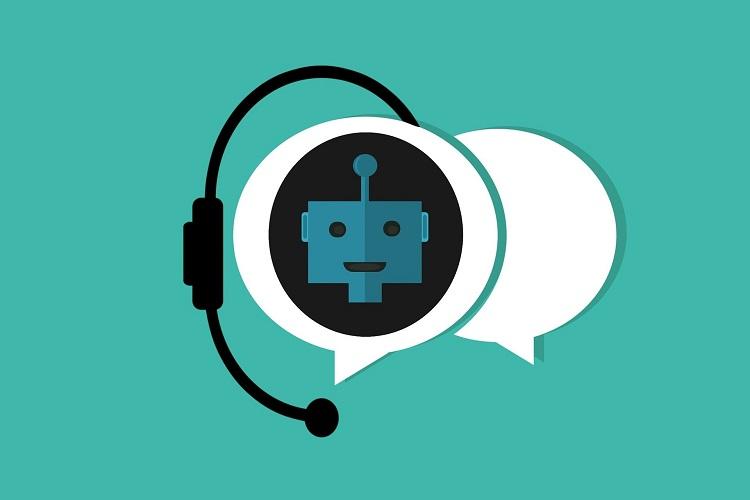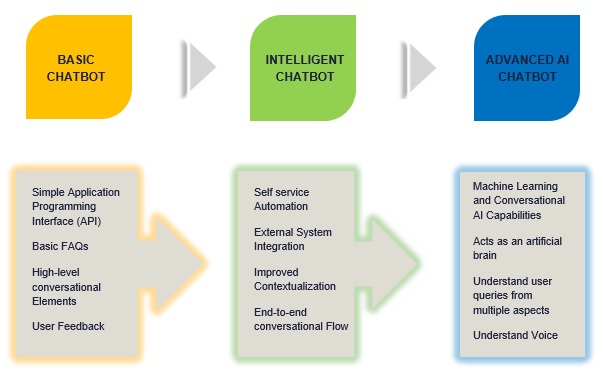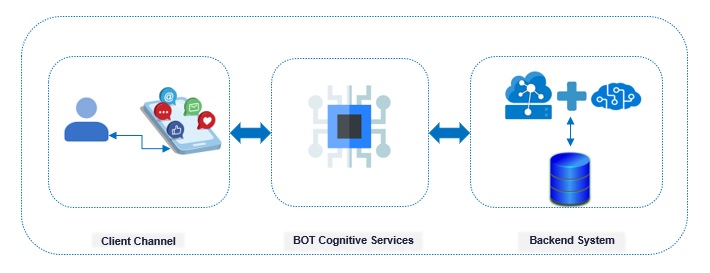
In today’s business driven world, chatbots have become our friends. They provide us with the handy FAQs at the start, as we see, nowadays when we go to any websites, the popup automatically comes up, saying “Hi, I am Kiara, your instant messaging bot, you can ask me what question you have”. This way we can just go there and type our query. This solves the issue of waiting for the customer service agent to be there and come online and then to chat with them, and yes, they are quiet intelligent bots that help us solve some of our preliminary queries. Many a times we are confused about where to find the link or if we must know the details of the process, like how to do the fund transfers, and such type of questions are readily available with the chatbots and they provide use with instant replies.
When we talk about Chatbots, some people think that these are just a waste of time. These chatbots don’t provide any usefulness. Therefore, in this informative article, I have shown how chatbots are useful, and then we will be going through and discussing different types of chatbots. I will also discuss the architecture, why do we need chatbots, and what are the different components of the chat bot. I have created diagrammatic depictions of the same to make it more interesting.
What is a Chatbot?
Chatbot is an intelligent, lightweight, and rich user interface software which offer a real-time conversational experience using artificial intelligence and natural language processing to mimic conversations with real people. Chabot is an advanced real-time software that learns from past conversations, train itself and gives excellent and accurate responses to the user queries.
Chatbots come in various dimensions and they are sophistically trained on wide range of intelligence for answering the questions to having the end-to-end capabilities to handle multiple users on a single time. Based on your requirements you should pick the right level of intelligence type depending on the below aspects.
Architecting a Chatbot

- Basic Chatbot
Basic chatbots are the simplest type of chatbot with limited capabilities and are usually developed based on the predefined set of questions. They are task-specific, that is user can only select the options provided by the chatbot. The chatbot will not make any inferences from its previous interactions. These chatbots are best suited for straightforward dialogues flows. They are very easy to build, and less training required to train them.
- Intelligent Chatbot
This type of chatbots are little smarter chatbots designed to simulate mid-level interactions with humans. They can have free-flowing conversations and understand structured data, language, and high-level sentiments. These chatbots require advanced programming to help it understand the context of interactions given by the user. To implement and execute and need a lot of data pattern to learn and the multiple technologies need to integrate in the backend.
- Advanced AI Chatbot
They are a combination of basic and intelligent chatbots. Advanced chatbot has ability to “read” or parse human language text. They are constantly learning and understanding the various inputs from the user in smarter ways. Advanced AI Chatbot offers a one-to-one conversation with millions of users. The most crucial aspect of these chatbots is its “training”. Training a Chatbot is similar to training a human, it requires advance AI algorithms, multiple technologies, skillset, time, investment, and huge data set.
Over the last couple of years, there has been tremendous technology in how people interact. The Robotic Process Automation (RPA), Artificial Intelligence (AI) and other latest technologies enabled people to use the various messaging platforms like Messenger, WhatsApp, Facebook, Namaste Bharat and many more. As we know that chat is the one of the powerful and popular medium for connecting and interacting with the people. It’s easy, user-interactive and powerful way to send our message and thoughts, as a result hundreds of messaging applications and platforms are readily available to use over the globe.
Due to the rapid spread of 4G and 5G telecom services, its easy, secure, and faster to get access to the various websites and platforms via chatbots over the internet. The thousands of websites and companies have built, integrated, and launch their Chatbot over the website to provide the quick and accurate responses to the end user’s queries. In this New Normal, various governments and organizations are working on the seamless service to help the user for resolving their queries and which is 24*7 available anytime anywhere.
- Improving Customer Satisfaction
- Scale Up Organizational Operations
- Chatbots Open Up New Sales Channels
- Handles Thousands of Customer Queries Simultaneously
- 24×7 Customer Support
- Digital Marketing Content Through Online Channels
- For Range of Identical Products and Services
Types of Chatbots
- Rule-based Chatbots:
These chatbots essentially work as an interactive FAQ. These chatbots ae developed based on a series of defined rules to guide customers through a series of menu options that can help answer their questions. In the backend there are various flowcharts and algorithms to recognize certain terms and patterns based on pre-set question answers keywords.
- AI-powered Chatbots:
These chatbots act as intelligent and advanced artificial brain, using natural conversation design algorithm and natural language processing capabilities. It not only understands requests from various type like voice, text, image but also context, intent, emotion, and it continuously gets smarter as it learns from conversations it has with users. AI-powered chatbots helps customers registering complaints, requests & answer advanced queries, can smartly capture feedback, search on information they need & fast track the resolution.
Components of Chatbot

a. Client Channel:
A real-time messaging platform or existing message (chat) application which is quick and responsible through which user can be able to initiates the chat with the chatbot.
b. BOT Cognitive Services:
Machine learning capabilities with the pretrained modules which improves understanding of user intent, relationships between words are taken as an input to extract meaning from a request from the user.
c. Backend System:
The component which connects to the backend system, the database and AI modules to leverage the user data and insights. Using AI training modules and algorithms store the various patterns, data inputs, queries from the user in this system. This is the area where all conversation information is stored and maintained the CatLog or history of all the conversations to the start of a conversation.
Chatbots are the most powerful AI-driven smart future applications. This is the one solution that can easily shaped into rapid customer need and satisfies the modern customer, and which is applicable across all the industries and functions. It has great flexibility to integrate with the number of modern messenger applications and complete, secure, and robust solution. Hence its popularity has drastically increased day-by-day.
The author is RPA Consultant at Atos India

 In
In
Add new comment